Oxblood lilies are baaaaack!
Five inches of rain soaked the soil last week, and the oxblood lilies (Rhodophiala bifida) have raised their celebratory red flags in response. Popping up from dormancy seemingly overnight, they’ve splashed color along the front of the raised beds in the back garden.
The herald of the coming show appeared in the Berkeley sedge lawn in the front yard. I used to have more bulbs planted here — imagine a sedge lawn brightened with clusters of oxblood lilies! — but the deer thanked me for the buffet. Actually they didn’t even thank me. So I moved them to the back garden, but one or two were left behind and still manage to bloom for a day or two each September before the deer find them.
Planting them in a raised bed or on a slope helps you enjoy these little beauties closer to eye level.
Two days later — yesterday, in fact — they were blooming amid the soap aloes’ spiny arms.
And next to ‘Bright Edge’ yucca’s pointy leaves and snazzy stripes.
And under a variegated whale’s tongue agave’s toothy flukes.
Wow, do they pop against the blue of that pot!
A shout-out to native chile pequin for adding its own jolt of red nearby.
You have to take the long view when you plant bulbs, knowing you’ll see them only once a year, fleetingly. But that fleeting moment is treasured as a sign that fall is really and truly right around the corner for us Texas gardeners.
I welcome your comments; please scroll to the end of this post to leave one. If you’re reading this in a subscription email, click here to visit Digging and find the comment box at the end of each post.
_______________________
Digging Deeper: News and Upcoming Events
Join the mailing list for Garden Spark Talks! Inspired by the idea of house concerts, I’m hosting a series of garden talks by inspiring designers and authors out of my home. Talks are limited-attendance events and generally sell out within just a few days, so join the Garden Spark email list for early notifications. Simply click this link and ask to be added.
All material © 2006-2018 by Pam Penick for Digging. Unauthorized reproduction prohibited.


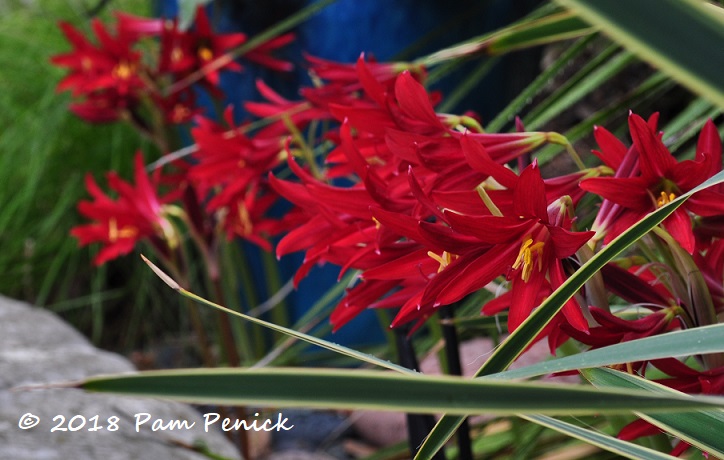
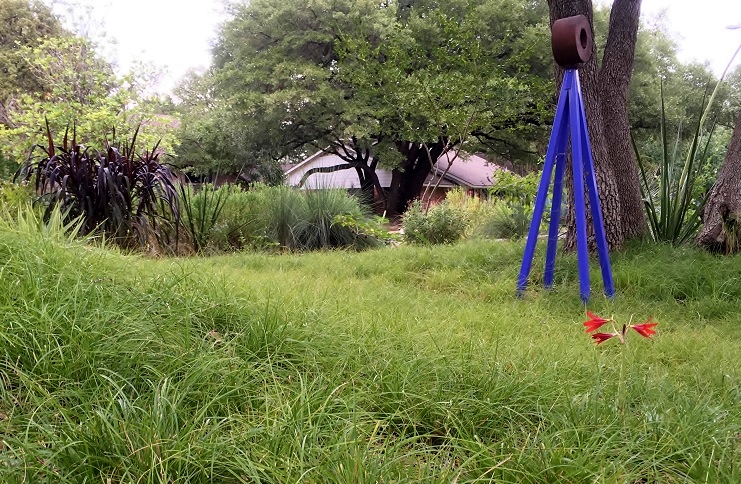
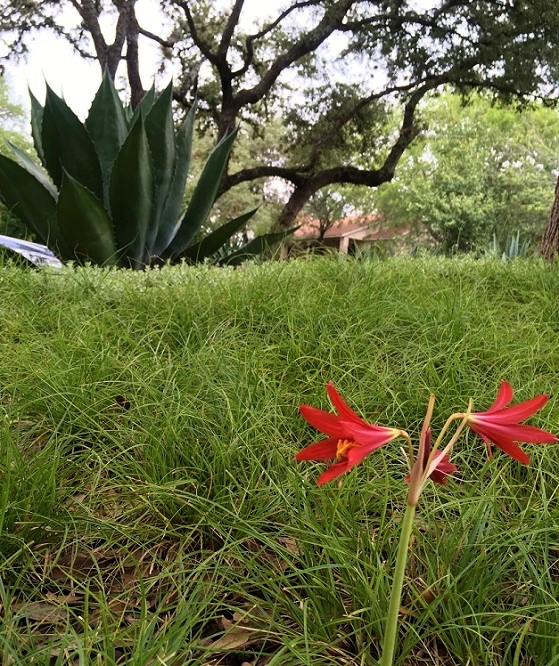
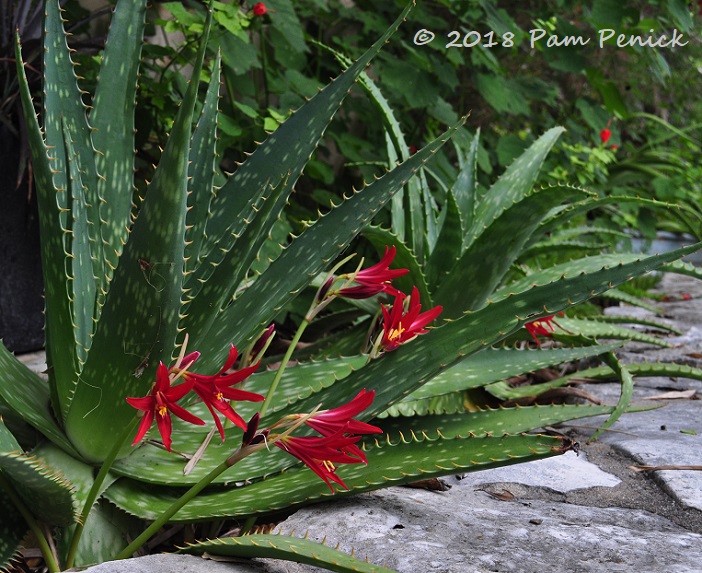
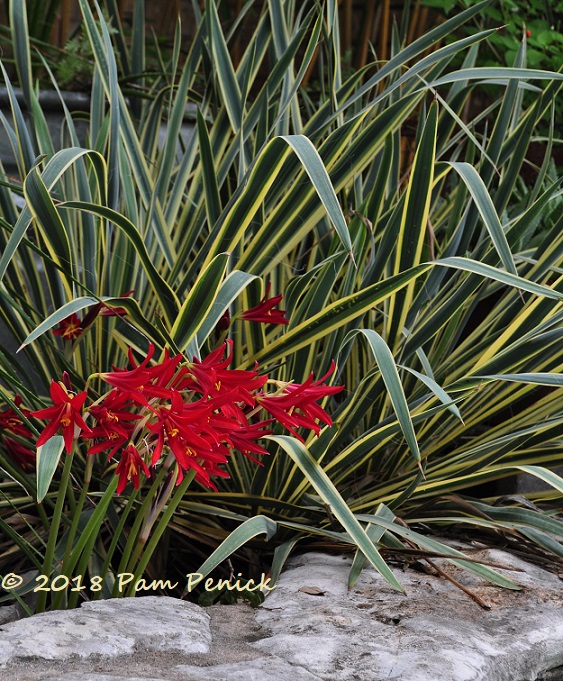
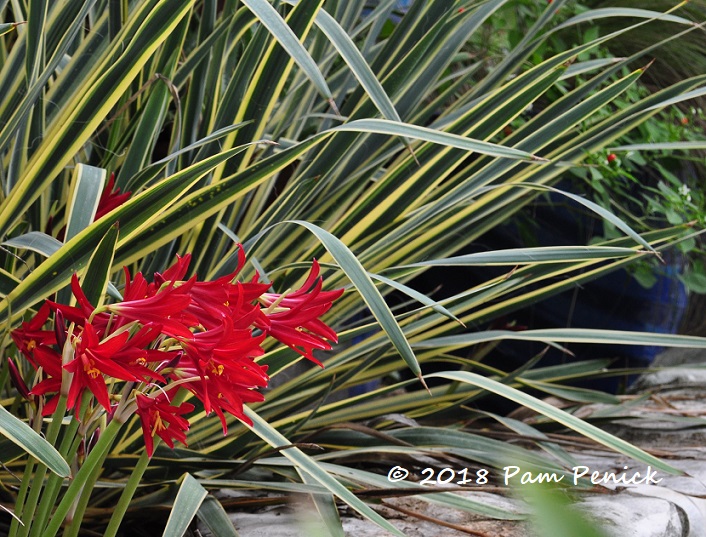
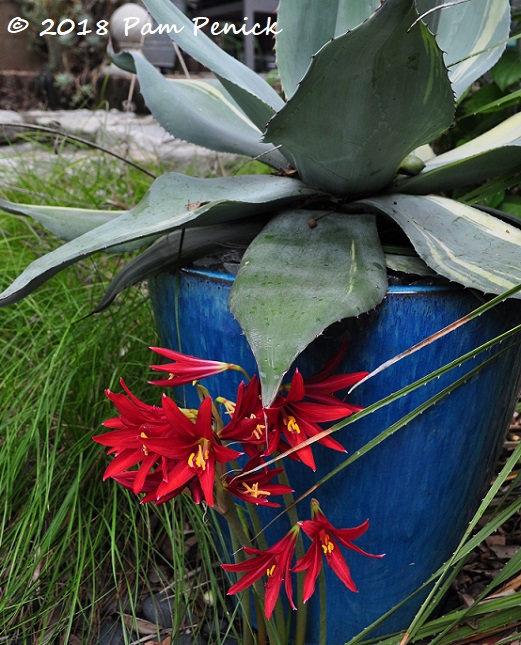
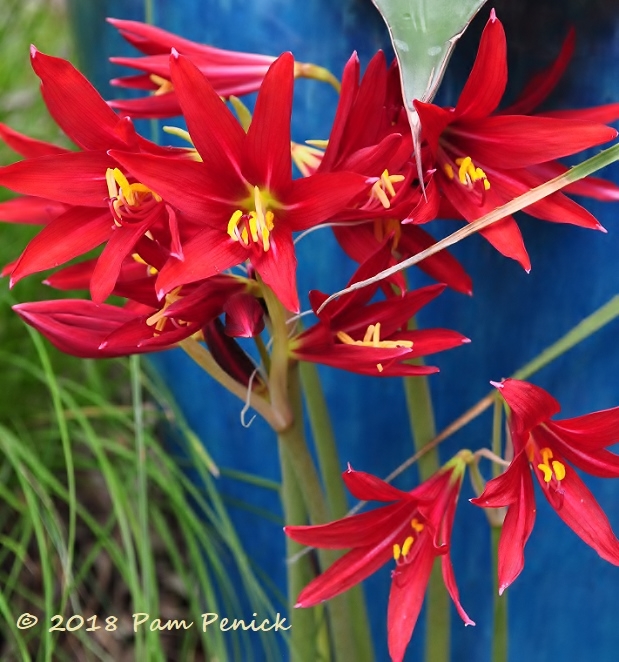
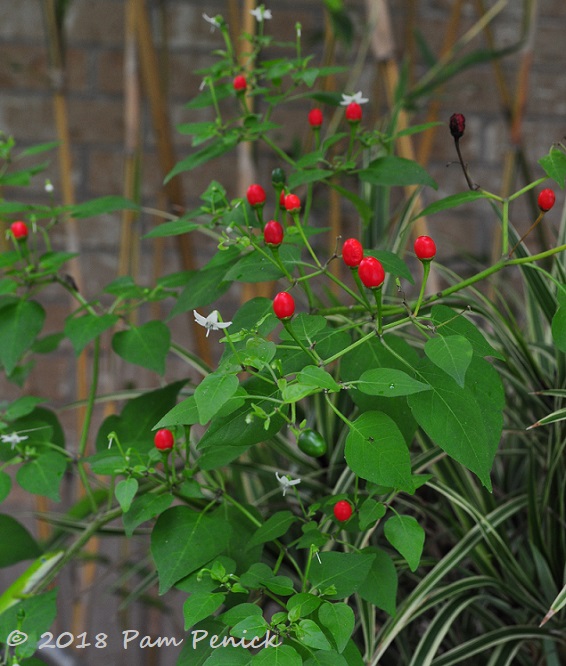
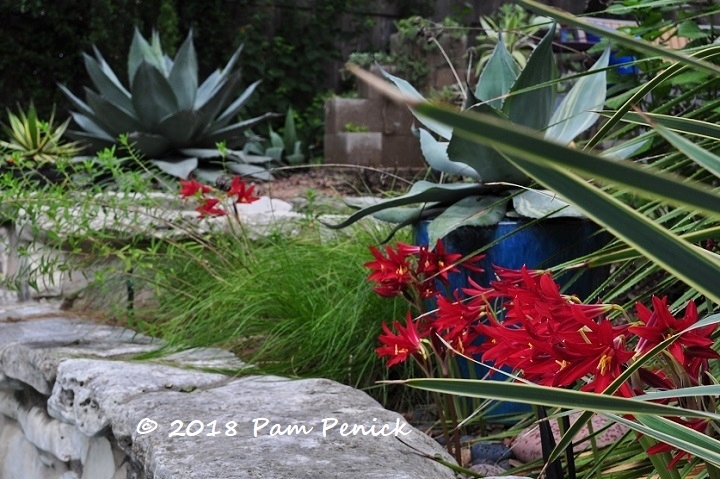
Gorgeous color. I so much prefer these to the pink “naked ladies” (Lycoris squamigera) people grow here.
Do the rain lilies (Zephyranthes) come later, or have they already happened? They’re marginally hardy here, but now that the USDA has put us in hardiness zone 7 I’d like to try some white ones (Z.candida) in a bed next to the house.
I loved seeing the pink naked ladies when we were in the PNW and Northern CA in August 2017. But the oxblood lilies do have a special place in my heart.
Rain lilies bloom sporadically, after a rain, throughout the growing season. Actually I would expect to see a lot more of those blooming right now, but I haven’t. They’re always a fun surprise when they do pop up.
They’re beautiful accents for all that fresh green foliage!
Red and green always make me happy, and I’m not even talking about Christmas!
What a coincidence! I just came in from outside where I spotted my oxblood lilly blooming for the first time. I planted it this past spring and wasn’t even entirely sure where. I know I didn’t give it any supplemental water, just what rainfall we got this dry summer–and it still lived to bloom! I have it in the protected backyard. I didn’t know the deer like it so much, so thanks for the warning to not plant them in the front yard:-)
Yay, isn’t it a delight to spot them all of a sudden? They’re tough little bulbs, perfect for the South.
Mine are finally blooming. Hope one day to have as many as you.
Divide them every couple of years after they bloom, Beth. You can easily increase your numbers that way.
You answered my question about the Ox Bloods and deer. I would love to put some outside in a more natural setting but I guess the answer is no. Your Berkeley sedge is loving the rain. It looks so lush. How about planting daffodils in there. The deer don’t eat those.
Too much shade for daffodils, I think. That would look lovely though.
A gorgeous dash of red for the garden.
I do love red.
I love my oxblood lillies too! You mentioned dividing them every couple of years – when do you do that? After they’ve bloomed or during another part of the season?
It’s easiest to divide them after they finish blooming because you can find them by the withering foliage. Zanthan Gardens has the best source of info on dividing them. Here’s the link: http://www.zanthan.com/gardens/plants/rhodophiala.html
Thank you so much!